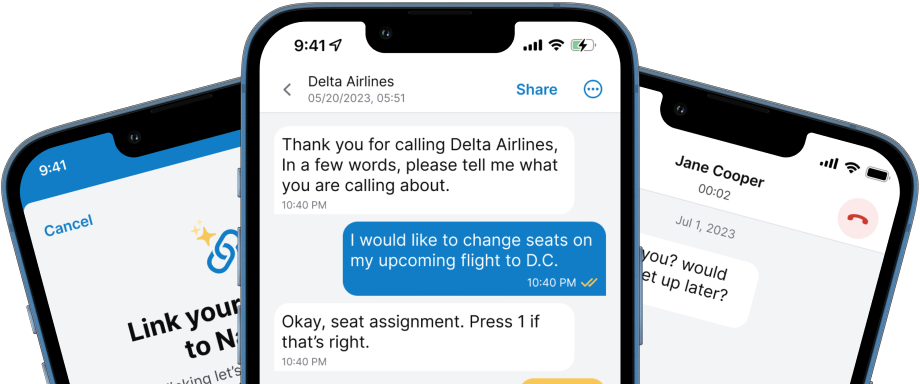Advances in Assistive Listening Technology for Movie Theaters
Movie theaters are adopting new technology to become an option for the deaf and hard-of-hearing population, promoting inclusivity. Read more!

Just when older adults older have adapted to streaming, and the future of movie-going appeared uncertain due to platforms like Netflix and Apple TV, theaters survived disruption.
The resurgence of hot ticket sales shows us that movie theatres are back, and people are loving it! However, returning to the glory days of cinema is one thing, but ensuring a lasting and inclusive experience is another.
Here, you’ll find a range of available assistive listening technology for movie theaters (plus our two cents!) and the best cinemas equipped to support your movie-going experience.
The Evolution of Inclusive Movie-Going Experiences
The Americans with Disabilities Act requires movie theaters to provide people who are deaf or hard of hearing assistive listening devices that allow them to enjoy a film.
Although prompted by legal obligations, we've witnessed progress in awareness and proactive measures to ensure everyone can enjoy movies to the fullest.
While some movie theaters meet the minimum requirements, others have taken it further. There’s still a way to go, but we believe in the power of advocacy, and together, we can drive advancements further to enhance our community's movie-going experiences.
Top Assistive Listening Devices for Theaters
Open Captions
With open captions, the text appears on the screen for everyone to see, similar to subtitles. This is the most convenient, seamless, and universally accessible technology. However, only a few theaters offer open captions screenings.
Most theaters offer open captions viewings for large groups of people who request in advance, and most foreign films screened in the US are subtitled in English.
Sound Systems
With high-end surround sound systems and IMAX experiences, movie theaters audio ranges from 74 to 104 decibels, which is louder than a normal conversation (60–70 decibels). So, people using hearing aids due to hearing loss, might not need additional assistive listening devices for theaters.
Closed Captions
This assistive hearing technology device transmits captions via a personal device, shifting the view from the big screen to the small display on the armrest. From limited availability to missing out on music or sound effects to running out of battery, these devices have their downside.
FM Systems
Personal FM systems are compatible with hearing aids and cochlear implants using a neck loop or direct audio input. They help reduce background noise, improve clarity and decrease listening fatigue. However, they often require a staff member to assist with the setup, and have issues with cleanliness, battery life, or technical malfunctions. Not fun.
Induction Loops
This assistive listening device for theaters transmits sound directly to hearing aids or cochlear implants equipped with telecoils (T-coils). However, the sound quality can vary depending on the theaters setup and the condition of the equipment. Also, induction loops typically have a limited range, meaning users must sit within a specific area to use the system.
Hearing Aids
Hearing aids are an excellent option for those with hearing loss to filter out background noise and experience better, clearer sound at the movies.
MobileConnect App
This personal and assistive listening app connects headphones to smartphones for improved audio quality. However, the system relies on smartphone compatibility, battery life, and internet connectivity.
Infrared Technology
Infrared (IR) assistive listening technology uses infrared light to transmit audio signals to receivers worn by users. The equipment tends to be bulky and uncomfortable to wear for an extended period. Additionally, it demands a clear line of sight to the transmitter for a reliable signal. It can be problematic if you have specific seating preferences or someone obstructs your line of sight during the movie.

3 Theaters with Assistive Listening Technology
AMC Theaters
AMC theaters have made great strides in ensuring that assistive technology is available at most locations. They offer:
- Open Captions to provide on-screen text captions visible to the entire audience that display spoken dialogue, sound effects, and other auditory information. Available at select US locations.
- Assistive Listening Devices adaptable to any auditorium amplify the audio from the movie with adjustable volume settings.
- Wireless Audio Description and Listening Devices that provide narration from any seat in the room with adjustable volume settings using headsets, neck loops or compatible headphones.
- Closed Captioning presents the movie dialogue in text on your personal screen using a secure device that fits in the cup holder with a flexible arm to adjust to the right angle.
Regal Cinemas
Regal Cinemas offer assistive listening devices for theaters, such as:
- Assistive Listening Devices that amplify the audio from the movie.
- Audio Description Devices that offer a spoken narration to describe important details.
- Closed Captioning Devices that privately display closed caption text directly in the line of sight for both 2D and 3D movies.
Available technologies are listed online below the screening times of each movie, and groups of ten or more can request an open captioned showing in advance.

Landmark Theaters
Landmark Theaters provides assistive listening devices for theaters, such as:
- Hearing Loops that link the theater sound system directly to hearing aids with T-coils.
- Closed Captioning using CaptiView as a personal content screen display.
- Wireless Audio Description and Listening Device delivering descriptive narration.
- Infrared (IR) Assistive Listening Technology receives and displays captions via infrared energy into the device that fits in the seat's cupholder.
- IRH-280 or IRH-281 Headphone Receiver is a two-channel Infrared headphone with volume control that delivers descriptive narration, known as Descriptive Video Services, that can also enhance dialogue for hard of hearing individuals.

Conclusion
As theaters continue to captivate moviegoers, including those who are deaf or hard of hearing, assistive listening devices are advancing to enable everyone to enjoy the experience. And as more theater chains continue to embrace and readily make assistive listening technologies available, more people can come together to experience movie theater entertainment.
However, one solution stands out as the most practical and universally agreeable: open captions. Unlike other assistive listening technologies requiring specialized equipment or limitations, open captions provide a seamless experience for all viewers without additional devices.





![Why Should Movie Theaters Include Open Captions? [Plus, Reasons You Probably Didn’t Consider]](https://assets-global.website-files.com/639ce4c7e9b4747c3b0faf59/6440443d47e37f55776c38cc_jakob-owens-CiUR8zISX60-unsplash.jpg)